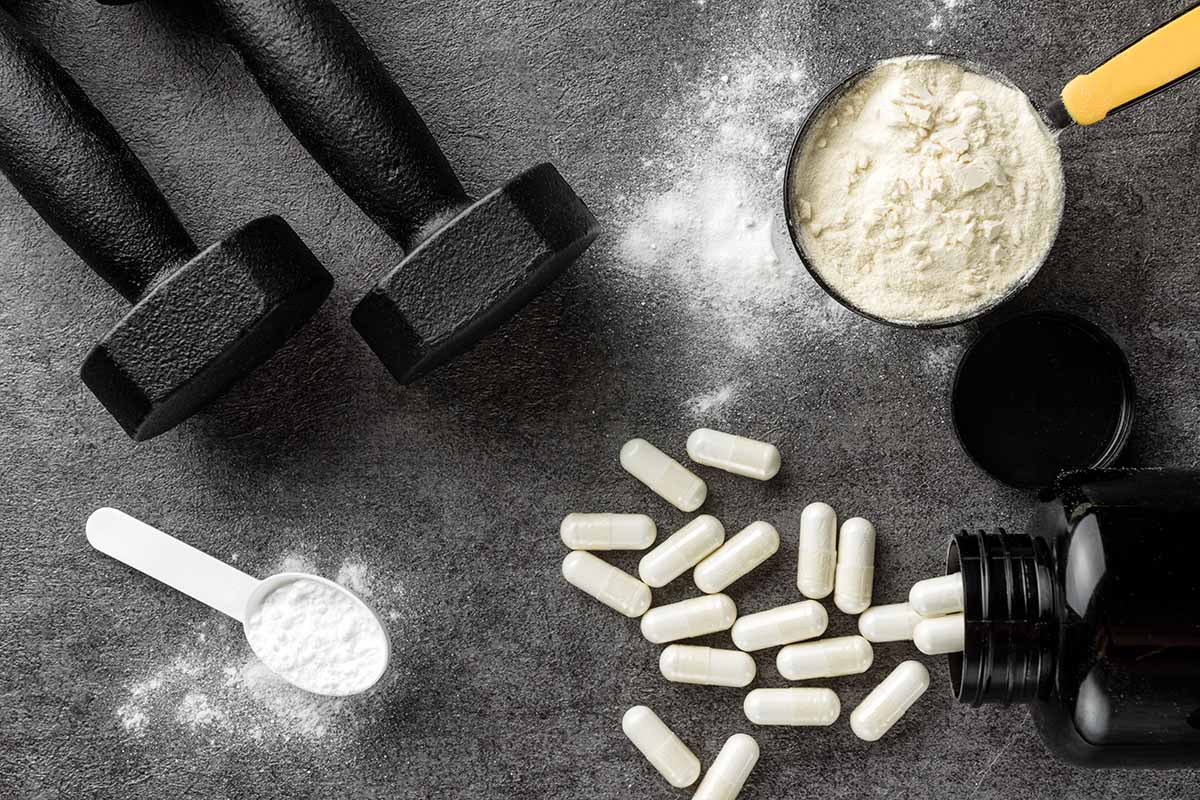

In the ever-evolving landscape of sports and fitness, where people constantly seek an edge over their competition, the scientific and anecdotal exploration of supplements becomes paramount. Among this vast array, creatine stands tall, often hailed as the “gold standard” of performance-enhancing supplements. Its rise to prominence isn’t merely a result of clever marketing, but decades of rigorous scientific studies that underscore its efficacy. Especially prevalent in sports that demand explosive bursts of power, like sprinting or weightlifting, creatine’s biochemistry offers a fascinating glimpse into how our muscles function and how they can be further optimised. As we unpack the science and application of this compound, a holistic understanding is vital, ensuring that users can make informed decisions that align with their athletic ambitions and health priorities.
Creatine is a substance that our bodies naturally produce, and we also get it from foods like fish and red meat. Think of it as a battery booster for our muscles. It’s mainly stored in muscles and helps them produce more of the energy they need for quick, intense activities. Because of this, it’s become quite popular among athletes and fitness enthusiasts. They believe that by taking creatine supplements, they can boost their workout performance and get better results. And there’s science to back this up! Studies have shown that creatine can indeed help improve muscle strength and energy, especially during short bursts of high-intensity activities.
Creatine supplementation has been embraced primarily because of its impressive capability to refresh our muscles’ energy source, ATP, especially during quick, intense activities like weightlifting or sprinting. Imagine you’re running a sprint; with creatine, it’s like getting a small but significant turbo boost that lets you push a bit harder or maintain your peak speed for a few moments longer before feeling tired.
Furthermore, there’s another interesting aspect of creatine: its relationship with muscle size. When you consume creatine, it not only aids in energy production but also causes muscles to draw in more water, making them appear fuller. This isn’t just about aesthetics; the increased water content may help jump-start processes that build muscle tissue. So, in a way, creatine can be seen as a two-fold tool: it enhances both muscle performance and muscle-building potential.
While the consensus in the scientific community points to creatine being safe for most people when taken in recommended amounts, it’s always vital to consult with a healthcare professional before starting any supplementation. Some individuals may experience gastrointestinal disturbances with high creatine doses. Proper dosing and ensuring adequate hydration can mitigate some of these potential side effects.
For those interested in exploring the benefits of creatine, a common protocol involves a “loading phase” followed by a “maintenance phase.” The loading phase typically consists of taking 20 grams of creatine daily (divided into 4 doses) for 5-7 days. After this period, the maintenance phase kicks in, with daily doses of 3-5 grams.
However, some research suggests that a simple daily dose of 3-5 grams, without the loading phase, can still offer the same benefits over time.
The sports supplementation landscape is vast and, at times, bewildering. Amidst the cacophony of claims and promotions, it’s easy to lose sight of what truly works. Creatine, underpinned by substantial scientific backing, emerges as one of the few supplements that genuinely holds promise in enhancing athletic performance. But it’s vital to remember, while creatine offers potential benefits, it isn’t a magical potion. Its efficacy is most pronounced when it complements a holistic approach to training and nutrition. After all, every supplement, no matter how well-researched, plays a supporting role in the larger narrative of health and fitness. In navigating this arena, an athlete’s best allies are informed decision-making, guidance from trusted health and fitness professionals, and the ever-important intuition of one’s own body.
Hultman, E., Söderlund, K., Timmons, J. A., Cederblad, G., & Greenhaff, P. L. (1996). Muscle creatine loading in men. Journal of Applied Physiology, 81(1), 232-237.
Casey, A., & Greenhaff, P. L. (2000). Does dietary creatine supplementation play a role in skeletal muscle metabolism and performance? The American Journal of Clinical Nutrition, 72(2), 607S-617S.
Olsen, S., Aagaard, P., Kadi, F., Tufekovic, G., Verney, J., Olesen, J. L., … & Duarte, J. A. (2006). Creatine supplementation augments the increase in satellite cell and myonuclei number in human skeletal muscle induced by strength training. The Journal of Physiology, 573(2), 525-534.
Schilling, B. K., Stone, M. H., Utter, A., Kearney, J. T., Johnson, M., Coglianese, R., … & Stone, M. E. (2001). Creatine supplementation and health variables: a retrospective study. Medicine and Science in Sports and Exercise, 33(2), 183-188.
Buford, T. W., Kreider, R. B., Stout, J. R., Greenwood, M., Campbell, B., Spano, M., … & Antonio, J. (2007). International Society of Sports Nutrition position stand: creatine supplementation and exercise. Journal of the International Society of Sports Nutrition, 4(1), 6.
Join our community and never miss out on the latest updates and insights in physical training and personal development. By subscribing to our Spectre Performance newsletter, you’ll receive regular, curated content that keeps you informed on all things lifestyle and performance.

